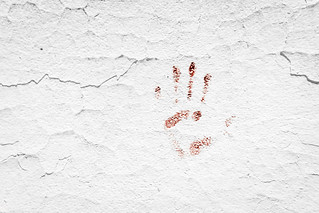By Jodie Gien
 Whether we admit it or not, we all worry. You might worry about the big things, like relationships, your job or your direction in life. Or it may be small niggly things like your to-do list and stewing over a comment you wish you hadn’t made. Worrying is completely normal but when your worries run away with you, it can stop you from really experiencing and enjoying what’s happening in the moment. When left for too long, it can also spiral into anxiety or even a panic attack.
Whether we admit it or not, we all worry. You might worry about the big things, like relationships, your job or your direction in life. Or it may be small niggly things like your to-do list and stewing over a comment you wish you hadn’t made. Worrying is completely normal but when your worries run away with you, it can stop you from really experiencing and enjoying what’s happening in the moment. When left for too long, it can also spiral into anxiety or even a panic attack.
Life is fast-paced and you probably find that you spend most of your day in your head, thinking. We analyse, plan and set goals at work, compare, label and judge our experiences and reflect on and evaluate our emotions. Most of us also spent a lot of time dwelling on what happened in the past and anticipating what might happen in the future. The mind is constantly busy telling stories, interpreting our experience by filling in missing pieces of information and then ruminating over the stories it has created, whether or not they are actually true.
When you’re lost in worry, its easy to mistake your fears and worries for facts, instead of recognising that they are just thoughts. This is compounded when the thoughts become so real that you have an emotional and physical response to them. You may wrongly interpret a friend not calling you back or your boss not saying hello as meaning something more than just a busy day. Or get caught up imagining the worst when going for an interview or giving a presentation. Feeling anxious in response to these thoughts can make your stomach tighten, your breathing faster and more shallow and your heart begin to pound. Your fingers and toes may feel tingly or numb and you may even feel lightheaded. Before you know it, you are in full blown panic, simply in reaction to your thoughts. This pattern can interfere with your sleep, hamper your body’s ability to digest and repair, and leave you feeling strung out and exhausted.
We all experience this at times. You are not alone.
The good news is that you can do something about it as soon as you notice yourself getting lost in worry, having repetitive thoughts, or feeling sensations of tightness or nervousness in your body. By shifting your attention away from your thoughts and into your actual embodied experience and the sensations of breathing, you can move out of thinking mode and into more of a sensing mode. This automatically alters your physical, psychological and emotional responses.
 If you, like most people, also become upset, angry or frustrated with yourself for feeling worried, anxious or panicky, and resist what you are experiencing, you’ll know that this intensifies the anxiety and only makes it worse. Rather than fight your experience by telling yourself you shouldn’t be feeling what you’re feeling or trying not to feel or getting upset, its important to allow yourself to feel however you are feeling. If you can learn to acknowledge what you’re feeling and allow it to be as it is for that moment, it is more likely to settle down and pass. (See these two posts for more on emotional mindfulness and how to use mindfulness to be with your feelings)
If you, like most people, also become upset, angry or frustrated with yourself for feeling worried, anxious or panicky, and resist what you are experiencing, you’ll know that this intensifies the anxiety and only makes it worse. Rather than fight your experience by telling yourself you shouldn’t be feeling what you’re feeling or trying not to feel or getting upset, its important to allow yourself to feel however you are feeling. If you can learn to acknowledge what you’re feeling and allow it to be as it is for that moment, it is more likely to settle down and pass. (See these two posts for more on emotional mindfulness and how to use mindfulness to be with your feelings)
Here are three very simple and quick mindfulness techniques you can use to help get you get out of worry, away from anxiety and even halt a panic attack in its tracks.
1. Anchoring
One of the best ways to calm yourself down is to anchor yourself by directing your attention into the lower half of your body. Begin by focusing on your feet and how they feel inside your socks or shoes and against the ground. Expand your attention to include the sensations first in your lower legs and then in your upper legs – do they feel heavy or light? Warm or cool? Tingly or numb? Now include the sensations of your breathing, really relaxing as you breathe out.
This is a great way of anchoring yourself and you can do it any time, with your eyes open or closed, while sitting or even while walking around. Anchor yourself. Then breathe.
2. Breath counting
This technique can be used in conjunction with anchoring or on its own. Anchor first. On your next in-breath, count up to 6 as you breathe all the way in, and then on the out-breath, count up to 10 as you breathe all the way out. This technique has the effect of lengthening both the in-breath and the out-breath, slowing down your breathing. It also lengthens the out-breath more than the in-breath, forcing you to release more carbon dioxide, slowing your heart rate, calming you down and restoring emotional equilibrium.
Make sure you fit the numbers to your breath and not the other way around. If 6 and 10 don’t work for you, find another ratio that does, as long as the out-breath is at least two counts longer than the in-breath. If it’s too hard to continue breathing while counting, count for one full breath, then take one normal breath and count the next one.
If you feel very panicked and can’t manage the counting, say “in” to your self as you breath in, and “out” as you breathe out fully, trying to elongate the out-breath. Then again, say “in” on the in breath etc. Keep going for at least one minute but go for as long as you need. I have used this technique very successfully myself to ward off impending panic attacks in the middle of the night.
3. Finger breathing
 Finger breathing is another version of breath counting. Hold one hand in front of you, palm facing towards you. With the index finger of your other hand, trace up the outside length of your thumb while you breath in, pausing at the top of your thumb and then trace it down the other side while you breath out. That’s one breath. Trace up the side of the next finger while you breathe in, pause at the top, and then trace down the other side of that finger while you breathe out. That’s two breaths. Keep going, tracing along each finger as you count each breath. When you get the end of the last finger, come back up that finger and do it in reverse.
Finger breathing is another version of breath counting. Hold one hand in front of you, palm facing towards you. With the index finger of your other hand, trace up the outside length of your thumb while you breath in, pausing at the top of your thumb and then trace it down the other side while you breath out. That’s one breath. Trace up the side of the next finger while you breathe in, pause at the top, and then trace down the other side of that finger while you breathe out. That’s two breaths. Keep going, tracing along each finger as you count each breath. When you get the end of the last finger, come back up that finger and do it in reverse.
This practice gives you something visual to focus on and something kinaesthetic to do with your hands as well as focusing on counting and your breathing. Its very useful when there is a lot going around you and its hard to just close your eyes and focus inwards. It’s also a very easy technique to teach teenagers and kids.
These mindfulness techniques are not new. Many psychologists and counsellors have been using these tools for years. What’s new is the acknowledgement that we can all benefit from mindfulness – these techniques are useful not only for clinical anxiety or panic but are just as effective for everyday experiences. Try them and notice what happens.
The original post can be found on the Wellbeing Australia blog here.
Jodie Gien is a mindfulness and meditation teacher with a long-standing practice of her own. Having been a human rights and discrimination lawyer and mediator at the Australian Human Rights Commission and Executive Coach for many years prior to focusing on meditation, she is passionate about fostering human potential and bringing out the best in people.
Find her Facebook page here.
Latest posts by Admin (see all)
- The Necessity of Mindfulness: Seeing Things as They Really Are - October 6, 2021
- How Mindfulness Saved My Life - August 8, 2021
- Mindfulness: A Bird’s-Eye View - July 11, 2021
I could have used the finger counting technique today. Glad I read your article!
Do you think we can abstain from desire completely? If so, is this more beneficial to us than by undergoing the suffering brought forth by desire? I’m interested in your opinion on desire in relation to mindfulness.
Cheers
Would like updates
Great breathing technique with tracing the hand, shall use in the future, thanks